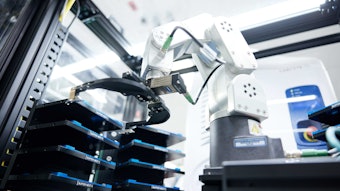
Electronic, or artificial nose technology (e-nose), has received a considerable amount of scrutiny since its inception over two decades ago. From the fi rst publications by Persaud and Dodd in 1982 (Nature), to today’s proposed development of an electronic mouth, debate continues as to its suitable home within the flavor and fragrance industry. Much of the scrutiny of this tool originates with the vastly different disciplines of analytical chemistry and sensory analysis.
As shown in F-1, analytical and sensory sciences are on opposite ends of a fl avor and fragrance characterization spectrum. Where the analytical approach prides itself on providing a bias free quantifi able value to fl avor characterization, sensory science relies on quality-based subjective results obtained from the most advanced receptors and neural network — our nose and brain. The evaluation techniques utilized by these two disciplines, such as gas chromatography (GC), gas chromatography olfactory (GCO), expert panels, descriptive analysis, triangle tests and preference tests, span the length of the spectrum from quantity to quality-based. The e-nose can be found in the middle of this spectrum as a compliment to the tools on either side of it.
In order to properly evaluate the e-nose’s potential contributions to the fl avor and fragrance industry, we must fi rst understand its makeup and intended use. E-nose instrumentation is generally composed of two primary parts: sensory inputs and the predictive processing algorithm into which they are fed. The sensory inputs mimic the receptor cells in our olfactory system. The predictive processing algorithm should be representative of the logic processing found in the brain. Similar to our own organoleptic development, the e-nose system must be “taught” to recognize volatile organic compounds (smells) through experience and/or training. Once properly trained, the e-nose system has the capacity to predict the identity of vapors found in its training set. The techniques an e-nose utilizes to process the signal response data can be as information on fl avor or aroma development.










